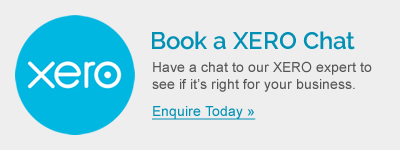Investment Rules Within SMSF: Can a SMSF Invest in Property Development
Property development is a high-risk industry subject to unforeseen delays, cost overruns, and competitive pressures. And when it comes to investing into property development projects through an SMSF, you need to be more careful.
Australians are huge property lovers, and many SMSF trustees are highly motivated to pursue their dreams of making great returns from real estate development by the prospect of a 15% preferential tax rate on income during the accumulation phase and maybe no tax during retirement. We examine the benefits, drawbacks, and common issues.

Investment Rules Within SMSF: Can a SMSF Invest in Property Development
Can I invest in real estate development with my SMSF?
The involvement of Self-Managed Superannuation Funds in property developments often catches the attention of the ATO.
Self-Managed Superannuation Funds can invest in property development if trustees ensure the investment complies with the rules.
If trustees make sure the investment complies with regulations, an SMSF may make property development investments. There are numerous rules as well. The test for sole purpose is crucial. The upkeep of the fund to give benefits for retirement, illness, or death is the responsibility of the trustees. Serious repercussions follow from violating this core principle, such as losing the fund’s favourable tax treatment and facing legal and criminal penalties.
Property development is by definition high risk. Therefore, fund trustees must make sure the SMSF isn’t just a convenient cash cow for a fantasy come true, especially if the developers are connected parties.
If the fund’s investment strategy permits it, an SMSF can invest in property development in a number of ways:
- Creating real estate directly
- An ungeared unit trust or business (where the participants may be linked)
- Investing in a separate business
- A cooperative enterprise or joint venture
Constructing real estate directly with fund assets
An SMSF may buy land from a third party and carry out its own independent development on the land. Frequently occurring common problems include:
Purchasing the land from a related party is prohibited for an SMSF, unless the land is company real estate that is utilised solely and exclusively for business purposes. This implies that the SMSF is not able to buy the gorgeous piece of land that a member inherited or that is held by a family trust and is ideal for development.
An SMSF is not permitted to take out a loan to develop property. It is permitted to employ a limited recourse borrowing agreement to acquire land, but not to enhance the asset through a loan. In other words, land cannot be developed using borrowed funds. Furthermore, if the SMSF has taken out a loan to buy land, it cannot alter the characteristics of that asset until the debt is paid back. In other words, no progress.
Who is going to develop the land? Issues frequently arise when fund members are tied to the real estate developers. Although hiring a related party builder to complete the work is an option, there are tight regulations requiring that the materials and labour be purchased at market value. That is, “mates rates” offer no benefits. Make sure all interactions are recorded, all transactions are at market value, and the paperwork is immaculate if you are utilising a related party builder.
GST may be applicable. The development and sale of any developed property may be subject to the goods and services tax. GST may be applicable if the ATO determines that an SMSF is engaged in the business of developing real estate or is carrying out a one-time development in a commercial way.
SMSF Can Invest in Property Development Projects
There are several ways for an SMSF to invest in property development projects if it isn’t already working on any of them on its own:
Related ungeared trust or business
When related parties wish to engage jointly in a real estate development, they frequently use an ungeared corporation or trust (per SIS Regulation, section 13.22C). A corporation or trust that is developing real estate may receive investments from the SMSF provided that the following criteria are met:
- Does not rent to a family member unless it is for business real estate.
- Does not take out loans or borrow money (must be ungeared)
- Cannot carry out business
- Keeps all transactions at a distance
- In addition, the company’s or unit trust’s assets are:
- Do not include a stake in a different organisation (you cannot own stock in a corporation, for example).
- Have no charge (i.e., mortgage over any asset) over them.
- Unless the asset is business real estate bought at market rates, are neither acquired from a related party nor were ever an asset of a related party.
See section 13.22C for complete information.
Following that, the SMSF receives its portion of the company’s or trust’s profits.
The SMSF can invest in real estate development with a related party under the terms of 13.22C without the development being regarded as an internal asset. The in-house asset rules, however, take effect if the requirements are not satisfied (at any time), and the SMSF may need to sell the trust units or business shares in order to reach the maximum 5% in-house asset limit. This typically entails a large reorganisation or the sale of the underlying property.
Issues with 13.22C agreements occur when the corporation or trust:
- Borrows additional funds to finish the development, or issues more units and sells them (is in business)
- Takes up a loan from an SMSF participant.
- Overdrafts, which violate 13.22C and might be viewed as loans.
- Makes use of a related party builder who either overcharges or undercharges for the work done, keeping the earnings that ought to have gone back to the SMSF.
Caution when running a business:
The trust or firm must not be engaged in business in order for the exception in 13.22C to be applicable. This regulation might make it illegal to construct and market short-term real estate ventures for financial gain.
13.22C arrangements are typically used for long-term investments in which the development allows for the construction of an asset that the trust or business then leases. This could include residential properties leased to unrelated parties (such as townhouses or modest developments) or commercial properties leased to related or unrelated parties (such as space for a child care facility or manufacturing).
Unrelated real estate developments
For a property development, investing in unrelated entities makes sense because, unlike ungeared entities, the entity can borrow money and take charge of the assets. Additionally, there is no cap on the amount of fund assets that can be invested, subject to the investment strategy and trust deed authorising the investment.
The percentage of ownership that the SMSF and its connected parties may possess while investing in the same firm is governed by regulations. For the purposes of in-house asset classification, the SMSF and its connected parties must possess more than 50% of the available units in order to qualify as an unrelated entity. This is due to the SMSF’s inability to maintain adequate control or influence over the entity and its continued status as an unrelated entity. The investment would become an internal asset and the entity would become a related party if the ATO determines that it is related to the SMSF.
Partnership Agreements or Joint Ventures
Joint venture (JV) property development is potentially an investment option for an SMSF; however, there are a number of considerations that must be carefully addressed, and the criteria must be strictly adhered to. Determining the specifics of the parties’ arrangement is one of the things that must be decided upon at the outset because there are many different types of arrangements that can be referred to as joint ventures. The ATO attests to the need for caution in confirming that agreements with connected parties are legitimate joint ventures.
In a joint venture, the SMSF, rather than the company carrying out the development, invests in and owns a portion of the property that is being developed. Every partner contributes the equal amount from the profits and pays the other’s costs (in terms of money or time) for the joint venture. The SMSF’s interest in the JV may be viewed as an in-house asset and handled as a loan to or investment in a related party if the arrangement is not correctly constituted. This might be the case, for instance, if the SMSF’s only contractual right is a return on the initial investment and it only supplies a capital outlay for the arrangement.
It’s also important to think about whether the parties’ agreement could be regarded as a partnership for GST, tax, and legal purposes. This might be the case, for instance, if the agreement calls for sharing earnings, cash from sales, or profits rather than project output.
Obtaining legal, financial, and tax guidance well in advance of starting a joint venture is imperative.
Is your SMSF the ideal means of developing real estate?
Trustees must have a solid justification for whatever investment they make and must give it significant thought.
Any guidance about real estate development must come from a certified financial advisor. For any contracts or agreements between parties, legal counsel should be consulted. and support for compliance from a licensed accountant.
Worker or contractor?
According to new ATO guidelines, a person is not automatically considered a contractor for tax and superannuation reasons just because an agreement calls for them to be one.
In cases when a written contract is present, the rights and duties stated in it must substantiate the existence of a separate contractual relationship. Even though a contractor possesses an ABN, it does not guarantee that they have been hired on as a contractor. According to the ATO, “the fundamental difference between an independent contractor and an employee is that:
- An employee works for their employer, contributing to the company in which they are employed.
- Although an independent contractor works as a principal of their own company and not as a member of another, they still supply services to a principal’s firm in order to develop their own enterprise.
Contracts over time.
A contractual arrangement at the beginning of a relationship might not stay that way over time, as the ATO notes. For instance, the classification needs to be reviewed if the worker is still employed by the company after the contractor’s project has been completed.
If there is no contract, what will happen?
In the absence of a contract, it’s critical to consider both the form and content of the relationship in order to make an informed decision regarding the existence of an employment or contractor relationship.
Need Assistance?
We recognise that all of this can be a little confusing, so please contact Success Accounting Group if you need help. Our team is available to assist you in this.
Insert Styled Box

About Lan Nguyen
Lan is the Founder and Chief Strategist at Success Accounting Group, Melbourne based CA firm. In a matter of short 8 years she has built up a reputable Chartered accounting firm with 3 offices and a team of 6 professional accountants and support team members. Her mission is to provide Innovative and Strategic Financial advice to help her customers make smarter financial decisions today for a brighter future.
Success Accounting Group is for established business owners who would like help to grow a sustained business. As a business owner you understand what drives your business success with our accounting team taking care of the rest.




